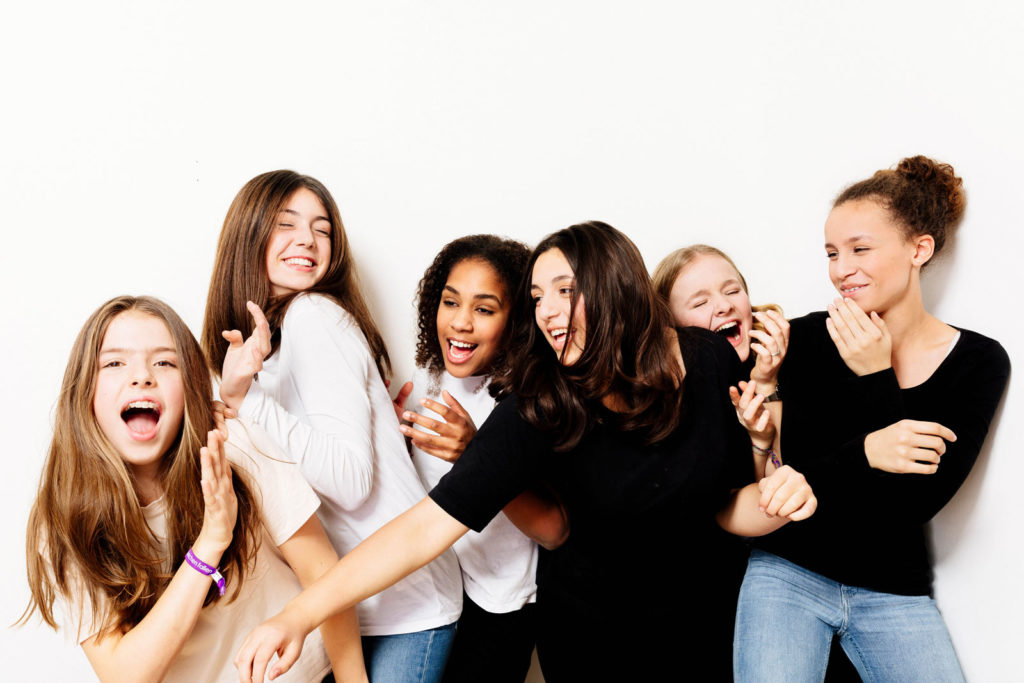
Zeitweise gesperrt: Viral Video “Not Heidis Girls” © Markus Abele, Pinkstinks
While the controversial obligation to incorporate upload filters is still being discussed at the European level and is not off the table yet, the largest platform for online videos, YouTube, has long since installed its own rights system, or perhaps better said, its own “legal system”, and is constantly refining it. In these days of fake news and smear campaigns on the web, there are certainly good, ethical reasons to block certain videos. However, it is usually economic considerations that prompt big internet companies to restrict access to certain content. And the systems used for filtering such unwanted content far too often lead to bizarre decisions. Here is one example from the field of social campaigns and media-critical art.
Not Heidi’s Girl (not me)
In February, some schoolgirls shot a feminist clip together with Pinkstinks that took a stand against the beauty craze and body-shaming. The target of their action was the TV show ‘Germany’s Next Topmodel’ with Heidi Klum. The makers put the three-minute music video on YouTube and quickly got 700,000 clicks. But shortly afterwards, the video vanished from the web. The algorithms in the filter system used by Google, which owns YouTube, had discerned a copyright infringement and ensured that the video was automatically blocked and the viral campaign brought to a halt. Only when Pinkstinks and the alleged rights holder (RTL) intervened was the block lifted. The filter system had made a mistake!
Petra Cortright’s VVEBCAM restored and re-released
Another, older case: in 2007, the artist Petra Cortright put her media-critical work VVEBCAM online on YouTube. The video shows the artist watching online videos on her home screen – recorded by a webcam. The videos themselves are not visible. Instead, Cortright overlaid the image with animations from a commonly available clipart repertoire. With this media “closed circuit” she addresses questions of media mirroring, the passive consumption of online videos, streaming technology and the presentation of artworks on the web. To alert and attract YouTube users, she added a long list of tags to the video. And it was these keywords, deliberately lifted from the online cosmos just like the usual spam, such as #Paris Hilton Nude, that were the artist’s downfall. User complaints led to YouTube identifying inappropriate ‘pornographic’ keywords, causing it to block the video in 2010. Cortright’s objection, citing the artistic significance of the piece and invoking artistic freedom, was summarily rejected in the space of just four hours. VVEBCAM had vanished. Although Rhizome was able to provisionally reconstruct the video in 2011, it has only recently been almost completely restored with the help of special software.
The restoration story is itself very interesting. The slogan ‘the internet never forgets’ has only been true for the past few years, and many early Net Art works would be lost were it not for initiatives like Net Art Anthology by Rhizome which not only reconstruct and archive video material but also make archiving tools like the web recorder available to everyone (see links below).
The two examples above, which are by no means isolated cases, raise other questions as well. Who controls what the public sees? Who oversees initiatives for restricting content from users, and according to which laws? And above all: Should we really leave such decision-making processes to the unpublished algorithms of private companies with a monopoly position?
URL: “Not Heidis Girls“
Restored: Petra Cortright’s VVEBCAM
Announcement of archive tool
Rhizome download Webrecorder
1 Trackback